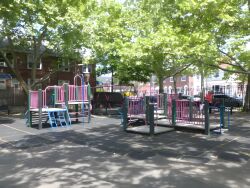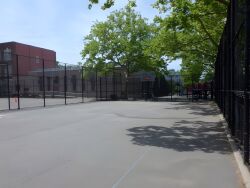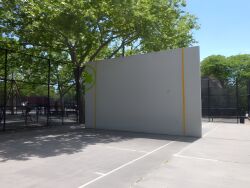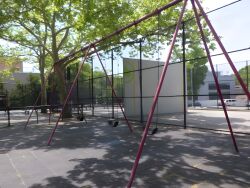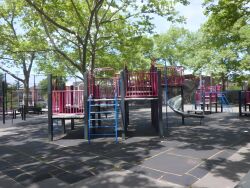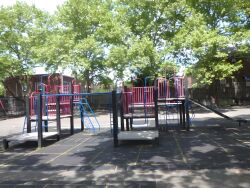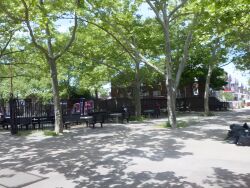Francis Lewis Playground
Francis Lewis Playground
What was here before?
The area now known as Bedford-Stuyvesant was originally inhabited by the Canarsie. In the 1630s and 1640s, the Dutch West India Company colonized the area, naming it Bedford. It began as a farming village populated by Dutch families and enslaved Africans. By 1790, over a quarter of Bedford's residents were of African descent.
Stuyvesant Heights was named for the last Dutch Director General of New Amsterdam, Peter Stuyvesant (1592-1672). Stuyvesant granted the land patents for this land in 1664.
In the early 19th century, slavery was being phased out and outlawed in New York by 1827. Local landowners sold land to free African Americans, who established communities like Weeksville and Carrsville. The area's population grew rapidly in the late 19th and early 20th centuries with the expansion of mass transit, as German, Irish, Scottish, and Jewish immigrants settled in Bedford Corners and Stuyvesant Heights. In the early 20th century, the neighborhood was known as Bedford- Stuyvesant. As these immigrant groups moved westward, Bedford-Stuyvesant became the largest African American community in New York City by 1940.
How did this site become a playground?
This city property was assigned to NYC Parks in 2000, and a playground was built soon after that to accommodate the growing population.
The park was completely renovated in 2025 with ADA accessibility, multigenerational play spaces, chalkboard wall, and outdoor classroom.
Who is this playground named for?
The streets in the district were named after prominent figures in Revolutionary American history.
Like the adjacent Lewis Avenue, this park honors Francis Lewis (1713-1802), an early American merchant, patriot, and signer of the Declaration of Independence. Born in Wales, Lewis became an orphan and later immigrated to America in 1738. He married Elizabeth Annesley in 1745 and built a successful trading business. During the French and Indian War, Lewis grew wealthy by supplying goods to British troops. After being imprisoned by the French, he was compensated with land upon his release.
Turning to the Revolutionary cause, Lewis served as a delegate to the Continental Congress, where he signed the Declaration of Independence in 1776. His Whitestone property was destroyed by the British, and his wife was abducted and died in 1779, likely due to captivity.
Throughout the war, Lewis served on committees dealing with munitions and naval affairs. Despite losing re-election in 1779, he continued to serve on the Board of Admiralty and later as a vestryman for Trinity Church in New York City until his death.
Check out your park's Vital Signs
Clean & Safe
Green & Resilient
Empowered & Engaged Users
Share your feedback or learn more about how this park is part of a
Vital Park System

